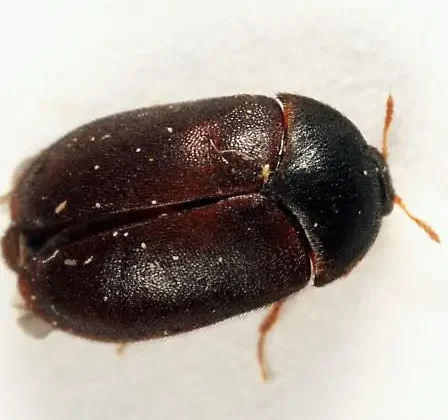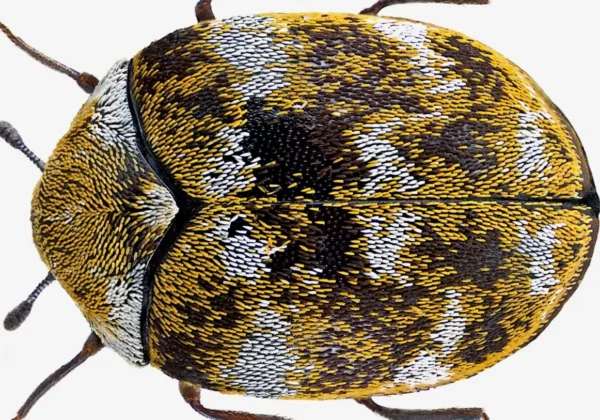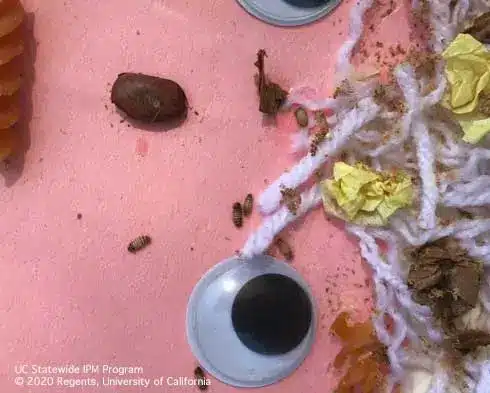Carpet Beetles
Fabric Eaters: How to Safeguard Your Property from Costly Carpet Beetle Infestations


Varied Carpet Beetles (Anthrenus verbasci)

Signs of Carpet Beetle Infestations
Carpet beetle infestations are often observed through irregular holes in natural fabrics, shed larval skins in dark corners and vents, or adult beetles near windowsills. Larvae leave behind fecal pellets resembling salt grains. Heavy infestations may include damaged books, fabrics, or dried plant materials.
To keep carpet beetles out:
-Store wool, silk, and fur in sealed plastic containers.
-Vacuum carpets, rugs, and upholstery weekly.
-Seal cracks around windows, doors, and vents.
-Clean pet bedding and grooming areas regularly.
-Use cedar blocks or lavender sachets in closets as repellents.
-Inspect dried flowers, taxidermy, and second-hand furniture before bringing indoors.
-Maintain low indoor humidity to deter larvae development.

Preventing Carpet Beetle Damage
Prevent infestations by washing or dry-cleaning seasonal clothing before storage. Regularly declutter attics and basements to eliminate larvae habitats. Install fine mesh screens on windows and vents to block adult beetles. Avoid leaving pet food, grains, or pantry products unsealed and dead insects (their food source) exposed in living spaces.

Effective Carpet Beetle Treatment
Thoroughly vacuum infested areas, focusing on edges and crevices. Steam carpets and upholstered furniture to remove eggs and larvae. Apply residual insecticides labeled for carpet beetles to baseboards and storage zones. For widespread damage, hire a professional to do a comprehensive treatment plan. Replace severely damaged fabrics.
Common Questions about Carpet Beetles
See below to learn more about Carpet Beetles in Ontario, including available treatment options and prevention.
Black, varied, and furniture carpet beetles are prevalent. All species target natural fibers and stored goods.
Look for holes in fabrics, shed larval skins, or adult beetles near light sources. Larvae may hide in dark, undisturbed areas or within thick layers of fabric.
Natural fibers (wool, silk), pet hair, dead insects, dried flowers, grains, and pantry products. Open windows and poor sanitation increase risk of infestation.
Yes. Larvae thrive indoors year-round. Adults overwinter in sheltered spots and become active in spring.
For large or persistent infestations, yes. Professionals identify breeding sites and apply targeted treatments to protect valuables.

Termites

Wasps

Mice & Rats

Spiders

Bed Bugs

Cockroaches

Fleas

Carpet Beetles
